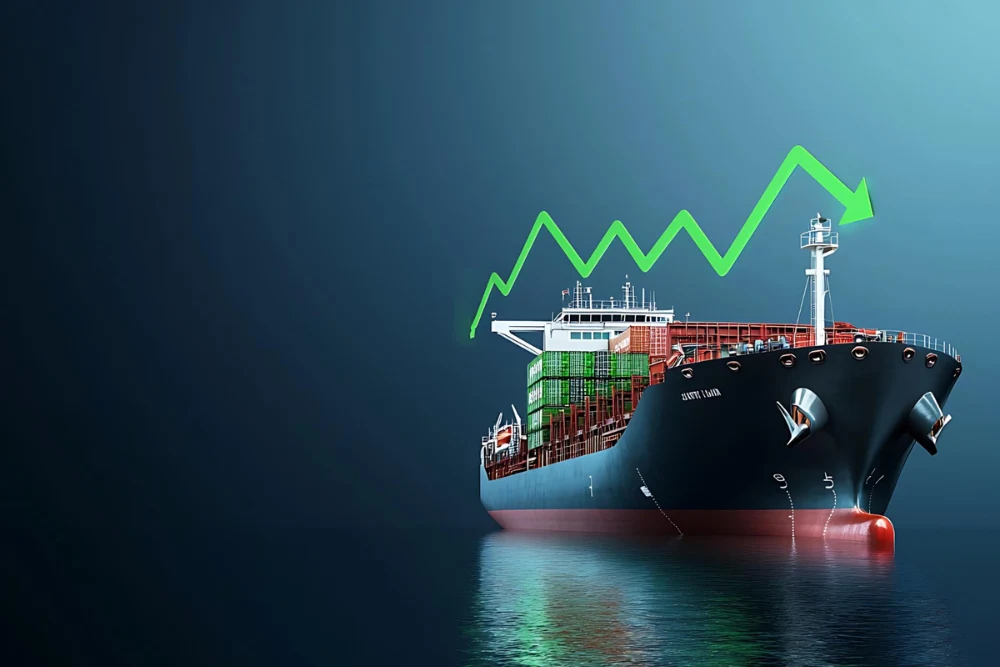Sea freight pricing can feel like a moving target — one day it’s affordable, the next it spikes for no clear reason. Whether you’re shipping electronics or everyday goods, the mystery behind changing freight rates can hurt your margins fast. This blog breaks down the real reasons prices rise and fall, and shows how smart timing, planning, and digital tools can help you keep costs under control.
- Key Takeaways
- Group 1 – Market & External Factors
- 1. Global Supply and Demand Trends
- 2. Seasonal Shipping Surges
- 3. Route Distance and Popularity
- 4. Fuel Prices and Currency Fluctuations
- Group 2 – Cargo & Container Factors
- 5. Type and Size of Shipment
- 6. Cargo Type and Handling Needs
- 7. Freight Calculation Methods
- Group 3 – Operational & Carrier Factors
- 8. Port Efficiency and Infrastructure
- 9. Ocean Carrier Competition and Alliances
- 10. Temporary Surcharges and Service Fees
- Online Tools to Track and Compare Freight Rates
- Rate Benchmarking Platforms
- AI and Index-Linked Contracts
- Pro Tips to Control Sea Freight Costs
- Book Early, Avoid Peak Seasons
- Use Online Rate Monitoring Tools
- Work With a Trusted Freight Forwarder
- Final Thoughts: Stay Ahead in a Volatile Freight Market
- FAQs on Sea Freight Pricing
- Why do ocean freight rates change so often?
- What’s the most expensive time to ship?
- Can I lock in freight rates ahead of time?
- Is air freight ever cheaper than sea freight?
- Need Reliable Sea Freight Support?
Key Takeaways
Freight rates fluctuate constantly due to market demand, seasonal trends, route popularity, and fuel costs — all beyond your immediate control.
Shipment type, cargo handling needs, and port efficiency play a huge role in what you ultimately pay.
Smart planning and digital rate-tracking tools help businesses cut costs, avoid peak-season surcharges, and stay ahead of volatile market shifts.
Ever wondered why the price of a sea freight shipment can suddenly change? If you’re an importer, exporter, or part of a logistics team, you’ve probably faced confusing and unpredictable shipping bills. This blog will help you understand the key factors affecting freight rates, how to manage them, and what tools can help you stay ahead.
Group 1 – Market & External Factors
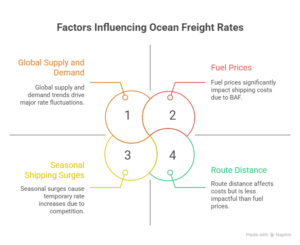
1. Global Supply and Demand Trends
The dynamics of supply and demand are among the biggest reasons ocean freight rates go up or down. When there’s high demand (like during a global shopping boom), container space becomes limited and international ocean freight rates spike. On the flip side, if there’s less trade or a slowdown, prices can dip. Events like pandemics or port strikes? They shake up everything.
2. Seasonal Shipping Surges
Certain times of the year naturally create price surges. Think: Chinese New Year, Black Friday prep, harvest seasons, or back-to-school shipping. These seasonal variations lead to limited space and increased competition, which raises the costs of sea freight.
3. Route Distance and Popularity
Longer routes obviously cost more. But did you know popular shipping lanes can be more expensive too? Why? Because they often face congestion, delays, and high port usage fees. A short route might be cheaper — unless it’s one of the busiest. So yes, route distance and popularity both affect ocean freight rates.
4. Fuel Prices and Currency Fluctuations
When fuel prices (also called bunker costs) go up, so does your shipping bill. Carriers pass these costs to you through something called the BAF (Bunker Adjustment Factor). Add in currency fluctuations, and you’ve got a recipe for unpredictable charges in ocean freight rates.
Group 2 – Cargo & Container Factors
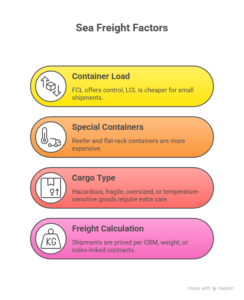
5. Type and Size of Shipment
Are you shipping FCL (Full Container Load) or LCL (Less than Container Load)? FCL gives you control over the container, while LCL is cheaper for smaller shipments but includes more handling. The size and load type directly influence the price of a sea freight shipment.
Special container? Say you’re using reefer (refrigerated) or flat-rack containers — these are more expensive due to their special handling needs.
6. Cargo Type and Handling Needs
Shipping hazardous, fragile, oversized, or temperature-sensitive goods? That requires extra care, special labeling, and sometimes permits — all of which raise your freight rates.
7. Freight Calculation Methods
Shipping isn’t always charged by size. Some shipments are priced per CBM (cubic meter), others by weight or through index-linked contracts. It’s important to know how your cargo is calculated to understand the costs of sea freight more clearly.
Group 3 – Operational & Carrier Factors
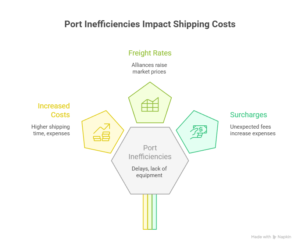
8. Port Efficiency and Infrastructure
Some ports are smooth and modern. Others? Not so much. Delays, lack of equipment, and inefficient terminals can increase your shipping time and cost. Ports with better infrastructure tend to lower your overall expenses.
9. Ocean Carrier Competition and Alliances
A few big shipping alliances now dominate the seas. With fewer competitors, they hold more pricing power. If one alliance raises prices, others often follow — which affects the overall ocean freight rates across the market.
10. Temporary Surcharges and Service Fees
Surcharges pop up out of nowhere: congestion fees, documentation charges, port handling fees, and more. These can turn an affordable shipment into a costly one, fast.
Online Tools to Track and Compare Freight Rates
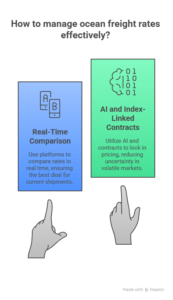
Rate Benchmarking Platforms
Platforms now exist to help you compare ocean freight rates in real time. These tools (non-branded here) let you plug in your route, cargo type, and container size to find the best deal.
AI and Index-Linked Contracts
Some digital platforms use AI and index-linked contracts to lock in pricing even when the market is volatile. It’s a great way to reduce uncertainty and manage budgets better.
Pro Tips to Control Sea Freight Costs
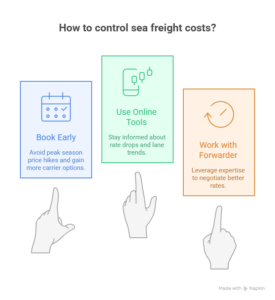
Book Early, Avoid Peak Seasons
Simple but powerful. Booking ahead helps you avoid peak season price hikes. It also gives you more carrier options.
Use Online Rate Monitoring Tools
Set alerts for rate drops or lane trends. This helps you ship smarter and stay informed.
Work With a Trusted Freight Forwarder
An experienced forwarder knows how to navigate freight rates that vary based on multiple factors and may even negotiate better rates on your behalf.
Final Thoughts: Stay Ahead in a Volatile Freight Market
In a world where sea freight rates change overnight, knowledge and timing make all the difference. At TriRoute Shipping, we don’t just move cargo — we help you make informed, cost-smart decisions. From comparing rates and choosing the right container type to avoiding hidden surcharges, our experts ensure every shipment sails smoothly. Stay ahead of market shifts with TriRoute — where smarter planning meets reliable delivery.
FAQs on Sea Freight Pricing
Why do ocean freight rates change so often?
Because of global events, fuel prices, supply and demand, and carrier competition.
What’s the most expensive time to ship?
During holidays, harvests, and shopping seasons when everyone’s trying to move goods at once.
Can I lock in freight rates ahead of time?
Yes. Ask your forwarder about index-linked contracts or long-term deals.
Is air freight ever cheaper than sea freight?
Very rarely. But for small, urgent shipments, air might make sense even if more expensive.
Need Reliable Sea Freight Support?
Get a Free Freight Quote or Talk to a Logistics Expert Today.


